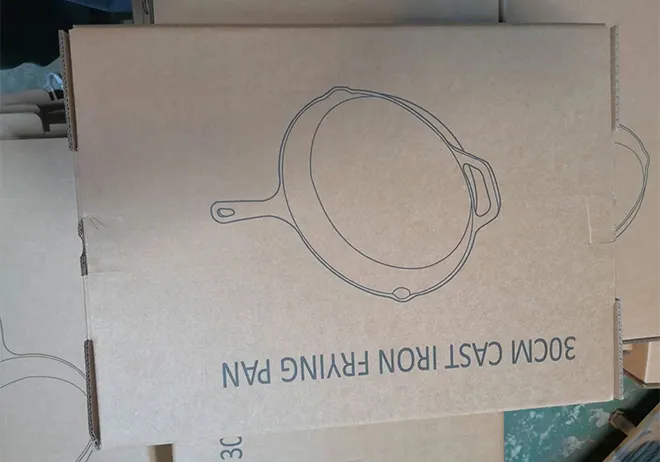
Benefits of Using a Cast Iron Skillet for Cooking Delicious Meals
The Versatility of Cast Iron Skillets
Cooking has always been an art form, and the tools we use can significantly influence the outcome of our culinary endeavors. One of the most treasured pieces of cookware in many kitchens is the cast iron skillet. Renowned for its durability, heat retention, and versatility, the cast iron skillet has earned its rightful place as a staple in both home and professional kitchens.
A Brief History
The origins of cast iron cookware date back to ancient China, but it wasn't until the 18th century that it gained popularity in Europe and America. The sturdy construction of cast iron made it an ideal material for cookware, as it was capable of withstanding high temperatures and could be used over an open flame or in an oven. Over time, cast iron skillets became a symbol of home cooking, with families passing down heirloom skillets that had been seasoned over generations.
Seasoning and Maintenance
One of the unique characteristics of cast iron skillets is their need for seasoning. Seasoning refers to the process of applying layers of fat to the skillet's surface, creating a natural non-stick coating and preventing rust. While this may sound daunting, maintaining a cast iron skillet is relatively simple. Regular use and proper care, such as cleaning with hot water and a gentle scrub brush, will help maintain its seasoning. Avoiding soap and prolonged soaking is crucial, as these can strip away the seasoning layer.
Cooking Techniques
cast iron skillet

The versatility of cast iron skillets shines through in various cooking techniques. Whether you're sautéing vegetables, browning meat, baking cornbread, or even frying an egg, the cast iron skillet can handle it all. Its ability to retain heat makes it perfect for searing meats, allowing for a beautiful crust while keeping the inside tender and juicy. Additionally, it can be used on the stovetop and transferred directly to the oven, enabling seamless transition from cooking methods.
Flavor Development
Another standout feature of cast iron skillets is their capacity to enhance flavors. The seasoning that builds up on the skillet over time contributes to the taste of the dishes prepared in it. Each meal cooked adds a little more depth to the flavor profile, creating a unique background that cannot be replicated with non-stick pans. Many chefs and home cooks alike appreciate the complex flavors that develop from the fond—small bits of food stuck to the bottom of the skillet—which can be deglazed to create rich sauces.
Health Benefits
In addition to their culinary advantages, cast iron skillets offer some health benefits as well. Cooking with cast iron can increase the iron content of food, which is particularly advantageous for individuals with iron deficiencies. Moreover, using a well-seasoned cast iron skillet reduces the need for excessive amounts of cooking oils and fats, promoting healthier cooking methods.
Conclusion
In conclusion, cast iron skillets are much more than just cookware; they are a testament to tradition, durability, and versatility in the kitchen. From their historical significance to the unique flavors they impart, these skillets have secured their place as an essential tool for cooks everywhere. Whether a seasoned chef or a novice in the kitchen, embracing the cast iron skillet can enhance your cooking experience and create a connection to a long-standing culinary heritage. So, dust off that skillet and let it sizzle; delicious meals await!
-
Season Cast Iron Perfectly with GPT-4 Turbo TipsNewsAug.01,2025
-
High Quality Cast Iron Cookware - Baixiang County Zhongda MachineryNewsAug.01,2025
-
Premium Cast Iron Pan: Durable & Perfect HeatNewsAug.01,2025
-
High Quality Kitchen Durable Black Round Cast Iron Cookware Pancake Crepe Pan-Baixiang County Zhongda Machinery Manufacturing Co., Ltd.NewsAug.01,2025
-
Cast Iron Cookware - Baixiang County Zhongda Machinery | Nonstick, Heat ResistanceNewsAug.01,2025
-
High Quality Kitchen Durable Black Round Cast Iron Cookware - Baixiang County Zhongda Machinery | Non-Stick, Heat Retention, DurableNewsJul.31,2025


